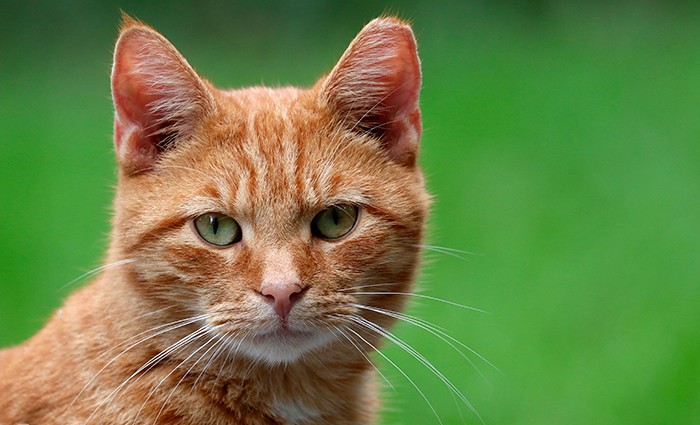Rufus The Cat

Therapeutic Insight: The John F. Barnes’ Myofascial Release Perspective— Rufus, the Cat
By John F. Barnes, P.T., L.M.T., N.C.T.M.B.
(Originally published on May 7, 2013)
Rufus chose his owner by showing up on her doorstep and refusing to leave. Rufus’ surgical history, as assessed by the vet, was that he was neutered and later developed a chronic urinary infection and feline urologic syndrome; because of this, the vet surgically removed his penis. Other surgical procedures included a thyroidectomy.
Rufus became an inside cat after his owner moved to Arizona. (In Arizona, coyotes consider cats to be appetizers.) He is now 14 years old, living inside, and has had no major traumas until a few weeks ago when he had a tooth removed by the vet. Afterward, he lost his appetite, became listless, and could not flex his neck to eat out of his bowl on the floor. He then began to projectile vomit. After numerous visits to the vet, who was comprehensive from a traditional point of view, Rufus’ problem was diagnosed as probable pancreatitis. The solution was intravenous steroids.
This is a true story. The experience illustrates the sad and typical medical, veterinary and therapeutic traditional symptomatic viewpoint versus the “structural-functional” myofascial perspective.
When Rufus’ owner explained his plight to me, I suggested she bring Rufus in for treatment. The surgical removal of a tooth as part of his recent history gave me clues as to what could have been the probable cause of the onset of his symptoms. Visualize this experience. The cat was anesthetized, strapped down, and his head and neck were probably held in extension to facilitate the removal of the tooth. This must have jammed the occipital condyles. Doing so creates a fascial strain around the jugular foramina and restriction of the occipital condyles, which can then entrap the vagus nerve, producing Rufus’ symptoms: nausea, listlessness, projectile vomiting, and limited cervical range of motion.’
So the typical symptomatic approach that so many of us, our clients, and animal friends become bogged down with, created unnecessary, prolonged suffering for Rufus. For his owner, it meant unnecessary expenses and time spent cleaning the house and taking Rufus back and forth to the vet.
In contrast with the myofascial release approach, in less than 10 minutes I scanned Rufus’ body and found and released his restrictions. His owner held Rufus while I used a gentle myofascial/osseous release to the occipital condyles and upper cervical and thyroid areas, and finished with a gentle unwinding with Rufus’ head and cervical spine. Rufus, by the way, thoroughly enjoyed his treatment!
The day following his treatment, Rufus was able to reach down to the floor to eat for the first time since his surgery, no further vomiting occurred, and he experienced a return of energy. He’s playful and happy and really glad he’s not going back to the Vet.
John F. Barnes, P.T., L.M.T., N.C.T.M.B., is an international lecturer, author, and acknowledged expert in the area of myofascial release. He has instructed more than 75,000 therapists worldwide in his Myofascial Release approach, and he is the author of Myofascial Release: the Search for Excellence (Rehabilitation Services Inc., 1990) and Healing Ancient Wounds: the Renegade’s Wisdom (Myofascial Release Treatment Centers & Seminars, 2000). He is on the counsel of advisors of the American Back Society; he is also on MASSAGE Magazine’s Editorial Advisory Board; and is a member of the American Physical Therapy Association. For more information, visit
